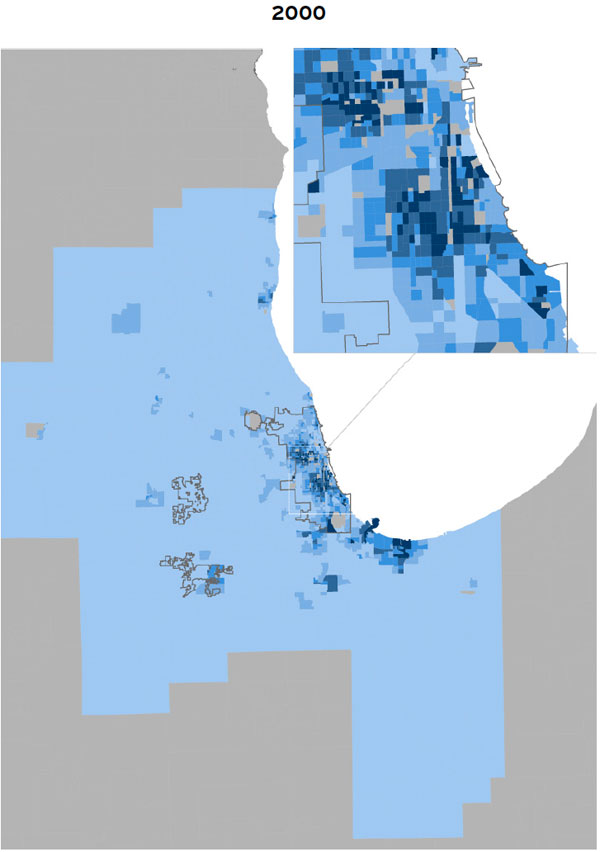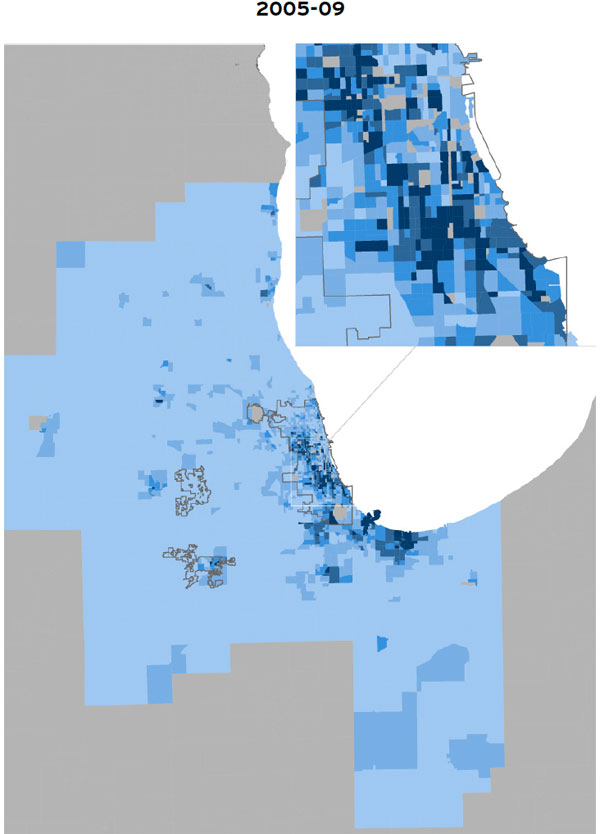The Brookings Institution has a new study about the "re-emergence of concentrated poverty" in the U.S. (via Niala Boodhoo). The economy of the past decade hit the Midwest hard in particular, and across the country essentially wiped out the substantial gains made during the 1990s in reducing poverty: the total number of extreme-poverty census tracts (poverty rates above 40 percent) was 2,921 in 1990; 2,075 in 2000; and 2,822 in 2005-09. Here's what that looked like in Chicago:


You can see the gradients get darker (lightest blue is below ten percent poverty, going up by tens to darkest blue, which represents extreme-poverty tracts), both in the city and the suburbs. there's still not a great deal of extreme poverty in the Chicagoland suburbs, but there are many more pockets where the poverty rate is ten to 20 percent. The metropolitan area (Chicago-Naperville-Joliet—though it obviously includes a lot more than that—with a population of 9.4 million) saw a large gain in raw numbers: 39 more extreme-poverty tracts with a population increase of 112,278 living in extreme-poverty tracts.
The recession hit Toledo the hardest of all America's 100 largest metropolitan areas: it went from seven extreme-poverty tracts to 22 over the course of a decade; its concentrated poverty rate is 23.5 percent, nine percent higher than Chicago's.
In related news, in a piece about empty buildings in the Midwest, Changing Gears's Dustin Dwyer got some stats about vacancies in the region's big cities:
Twenty-two percent of office space in the Cleveland area is empty. Chicago offices are 19 percent empty. Metro Detroit: almost 27 percent.


